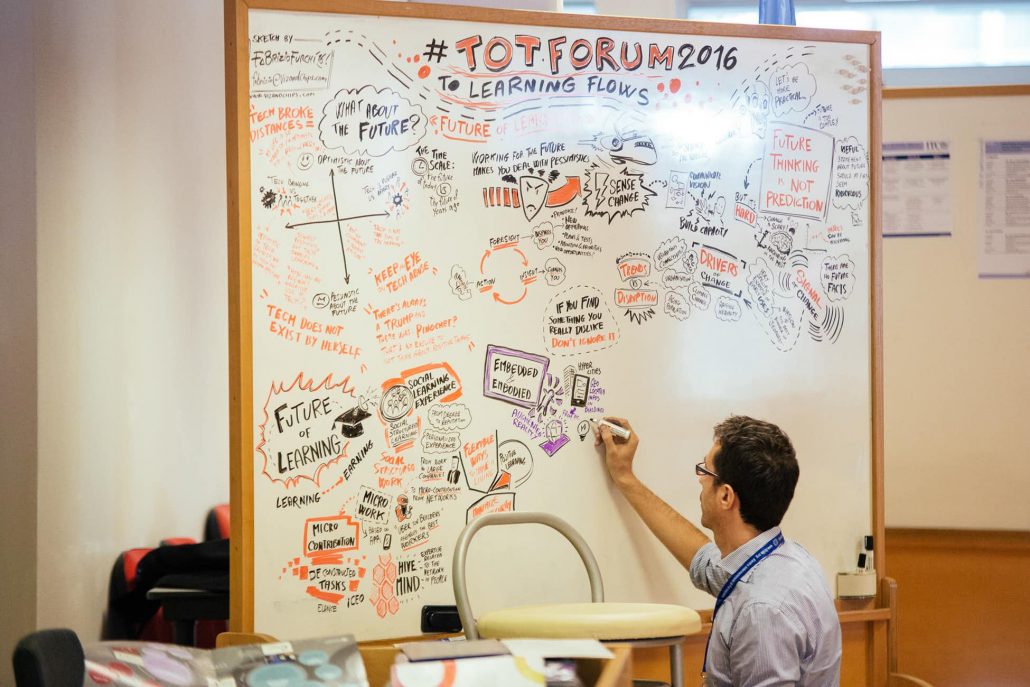Drawing Together

Reveal insights and paths forward through non-verbal expression
Overview
The Drawing Together method is based on storytelling through the use of five easy-to-draw symbols with a universal meaning. It taps into a playful mode to broaden the range of possibilities and elicit the right answers. Drawing becomes a game with the beneficial option of side stepping the limitations imposed by logical thinking and allowing participants to find and express hidden ideas, otherwise hard to access.
How to use it
- Reveal insights or understanding not accessible with logical thinking methods.
- Tap all the sources of knowledge for innovation (explicit, tacit, latent/emergent).
- Develop and deepen a shared understanding of a vision or complex dynamics.
- Use as a refreshing change of pace in a long meeting when a creative burst is needed.
- When there are strong differences in perspective and the group is experiencing an impasse.
- To overcome literacy and language barriers.
- Visual facilitation of a meeting or conference: drawings are created as the conversation unfolds.
- Reveal obscure or hidden relationships when working on a complex project.
- Help a vision statement come to life – particularly for visually-oriented people.
How to apply it
Start:
You are invited to tell a story about a challenge you face using only five symbols without words.
Setting:
Everyone makes their individual drawings simultaneously. First each participant practices the drawing of the symbols and makes first and second drafts of their drawings. Groups of maximum 4 people gather to interpret the drawings, then the whole group works with 1-2-4-All.
Materials:
An open wall with tapestry paper or flip chart pages. Water-based markers plus soft pastels to add colour.
Time/Steps:
- 5 minutes: The facilitator draws and describes the meaning of each symbol. Circle = wholeness; Rectangle = support; triangle = goal; spiral = change; star person = relationship
- 5 minutes: Individual time to practice drawing the five symbols: circle, rectangle, triangle, spiral, star person.
- 10 minutes: Without words, working individually, participants combine the symbols to tell a story about ‘the journey’ of working on a challenge or an innovation. A first draft is produced.
- 10 minutes: A second draft is drawn to refine the story by dramatizing the size, placement and colour of the symbols.
- 5 minutes: Participants take it in turns to gently invite someone or their small group to interpret their drawing: the person who has done the drawing does not speak.
- 5 minutes: Ask the whole group, “Together, what do the drawings reveal?” Use 1-2-4-All with larger groups.
How to adapt it
- One person can visually map conversations during a meeting (add words if you must).
- Computer tablets can support graphic recording.
- Use the Hero’s Journey as a template for your recording (a progression through status quo, call to novelty, discovery, validation, early adoption, spread).
Tips
- Remind participants, “Refined drawing skills are not required — get over your need for perfection!”
- Help participants accept whatever emerges in the drawings (there are often surprises).
- Draw an example of a story that helps others make a leap of understanding from a small example of behaviour change to a broad change in values or a shift in resource allocation (or both).
- Record your drawing with cameras and video recorders.
- Return to the drawing when you reconvene a group.
- Drawing is powerfully therapeutic – emotional manifestations may arise.





